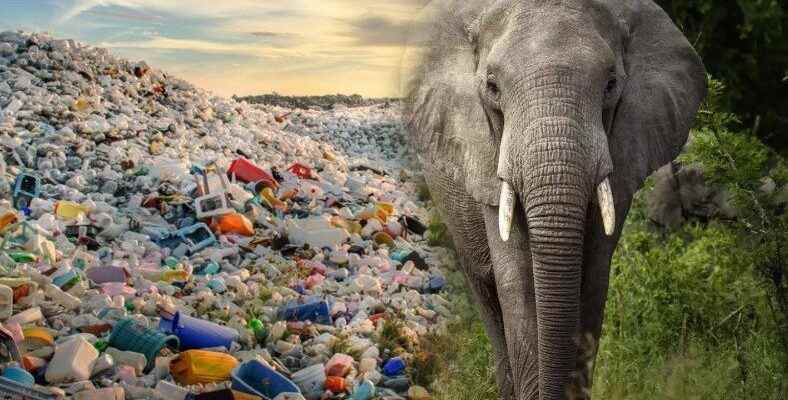It has been reported that 20 elephants have died from eating ‘plastic waste’ in Sri Lanka in the last eight years. Animal lovers are on the alert for elephants, whose numbers are dwindling.
The lives of innocent creatures continue to be destroyed due to the mistakes of people. According to the Associated Press, at least 20 elephants have been killed in the last eight years in the Pallakkadu village dump, 130 miles east of Sri Lanka’s capital, Colombo. from eating plastic garbage It was reported that he died.
After two more elephants were found dead over the weekend, veterinarians and environmentalists; like the broken electric fences originally built to keep elephants out of the waste pit, the country’s apprehension of these deaths unsuccessful mitigation efforts counter alarmed.
In autopsies, only plastic was found in elephant stomachs.
Speaking to the Associated Press, wildlife veterinarian Nihal Pushpakumara said that autopsies on elephants are based on foods normally eaten and digested by elephants. not found stating, “Polyethylene, food wraps, plastic, other indigestible materials and water were all we could see in autopsies” recorded as.
Sri Lanka allowed the electrified fence of the dump to rot after a lightning strike in 2014; did not take any new measures. 20 elephants in this region after the disappearance of this measure promised by the government to keep elephants safe from eating garbage died. In addition, Chinese state news outlet Xinhua reported that in 2020 due to the human-elephant conflict. 122 reported deaths, which previously averaged 85 per year.
RELATED NEWS
Statement from the Governorship of Konya About Thousands of Flamingos Died in Salt Lake
Elephants are highly respected animals in Sri Lanka; but this in danger Doesn’t change the fact that they are. According to the BBC, Sri Lanka conducted a census in 2011 that identified less than 6,000 elephants in the country; According to the AP, this number represents a huge drop compared to 14,000 in the 19th century.
